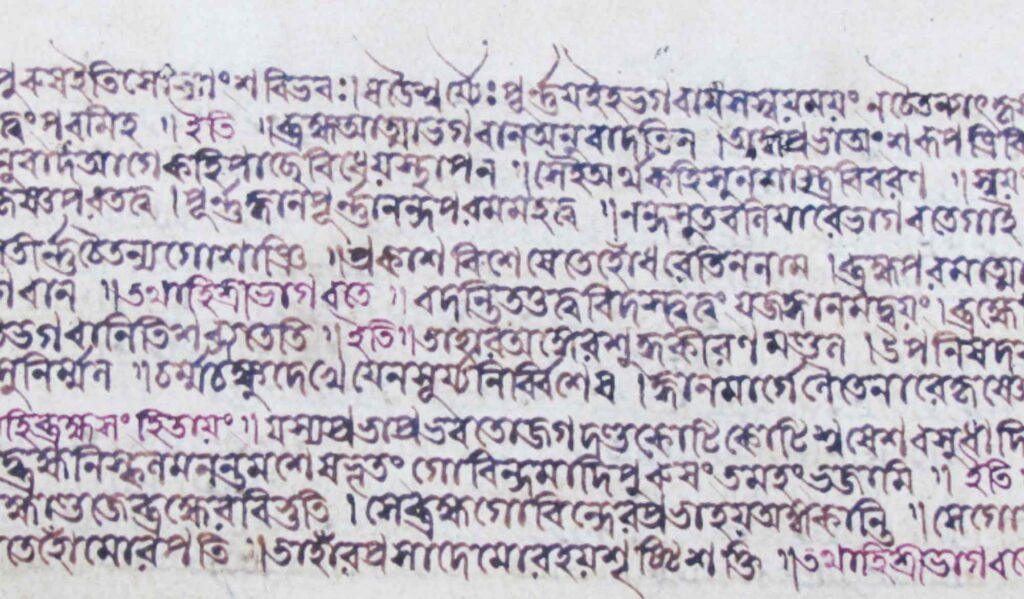Vaiṣṇava Siddhānta Mālā Part 1 – Chapter One
Nava-prameya-siddhānta (The Nine Philosophical Conclusions)
Question: What instruction has the most worshipable Śrī Śrī Caitanya Mahāprabhu given to us?
Answer: His instruction is this – we must carefully follow the nava-tattva (nine points of philosophy) that Śrī Madhvācārya has given to us in the guru-paramparā.
Question: What is the guru-paramaparā?
Answer: The original guru (ādi-guru) of all gurus is Bhagavān. By His mercy, He gave teachings on philosophical truths (tattva-upadeśa) to Śrī Brahmā, the original philosopher (ādi-kavi). From Śrī Brahmā it was passed on to Śrī Nārada, from Nārada to Śrī Vyāsa, and eventually from Śrī Vyāsa to Śrī Madhvācārya. The teachings that are received from the guru to the disciple are known as guru-paramparā upadeśa.
Question: What are the nine points of philosophy taught by Śrī Madhvācārya?
Answer: These are as follows:
(1) Bhagavān alone is the parama-tattva (Absolute Truth)
(2) He is fully realised by knowledge of the Vedas.
(3) The world is real.
(4) Differences are real.*
*The differences are five: īśvara and jīva, jīva and jīva, jīva and prākṛti, īśvara and prākṛti, and prākṛti and prākṛti.
(5) The jīva is a servant of Hari.
(6) All jīvas are classified as either mokṣa (liberated) or baddha (bound).
(7) Attaining the feet of Bhagavān is known as mokṣa.
(8) Pure bhajana of Bhagavān is the cause of mokṣa.
(9) Pratyakṣa (direct perception), anumāna (logical inference), and śabda (statements of the Vedas) are the three types of pramāṇa (evidence).









